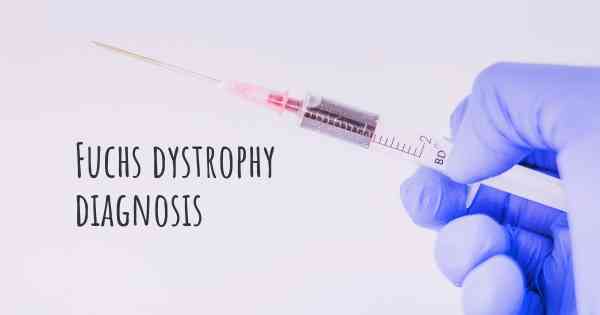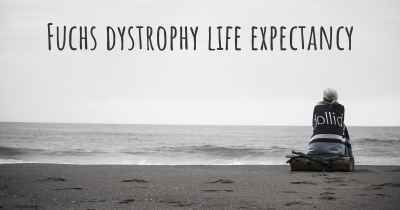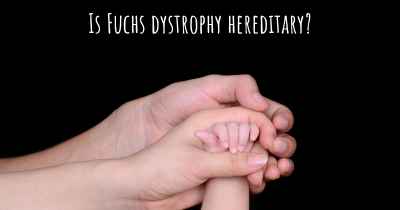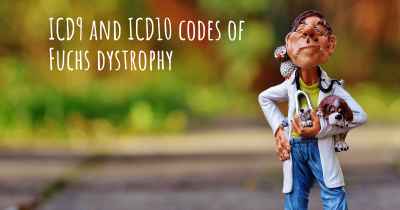How is Fuchs dystrophy diagnosed?
See how Fuchs dystrophy is diagnosed. Which specialists are essential to meet, what tests are needed and other useful information for the diagnosis of Fuchs dystrophy

Fuchs dystrophy is a progressive eye condition that affects the cornea, the clear front surface of the eye. It is characterized by the gradual loss of endothelial cells, which are responsible for maintaining the cornea's clarity and preventing fluid buildup. As the disease progresses, the cornea becomes swollen and cloudy, leading to vision problems.
Diagnosing Fuchs dystrophy involves a comprehensive eye examination and several specialized tests. These tests help evaluate the cornea's health, measure its thickness, and assess visual acuity. The diagnosis is typically made by an ophthalmologist, a medical doctor specializing in eye care.
Medical History and Symptoms
During the initial consultation, the ophthalmologist will review the patient's medical history and inquire about any symptoms they may be experiencing. Fuchs dystrophy often presents with symptoms such as:
- Blurry or hazy vision: Patients may notice a gradual decline in their vision, especially in the morning.
- Sensitivity to light: Bright lights can cause discomfort and glare.
- Eye pain or irritation: Some individuals may experience discomfort or a gritty sensation in their eyes.
- Difficulty seeing at night: Night vision may be impaired.
Visual Acuity Test
The ophthalmologist will perform a visual acuity test to assess the patient's ability to see clearly at various distances. This test involves reading letters or numbers from an eye chart. The results help determine the severity of vision loss caused by Fuchs dystrophy.
Slit Lamp Examination
A slit lamp examination is a crucial diagnostic tool for Fuchs dystrophy. It allows the ophthalmologist to examine the cornea under high magnification. The patient rests their chin on a chin rest, and the doctor uses a specialized microscope with a bright light source to examine the cornea's surface and structure. This examination helps identify corneal swelling, the presence of guttae (tiny bumps on the inner surface of the cornea), and other abnormalities.
Pachymetry
Pachymetry is a non-invasive test that measures the thickness of the cornea. It is performed using a handheld device called a pachymeter. The ophthalmologist places a small probe on the cornea's surface, and the device uses ultrasound waves to measure its thickness. In Fuchs dystrophy, corneal thickening may be observed due to fluid accumulation.
Specular Microscopy
Specular microscopy is a specialized imaging technique used to evaluate the corneal endothelium. It provides a detailed view of the endothelial cells and helps determine their density and morphology. During the test, the patient places their chin on a chin rest, and the ophthalmologist uses a microscope equipped with a camera to capture images of the cornea. These images are then analyzed to assess the health of the endothelial cells.
Endothelial Cell Count
Endothelial cell count is another important test to diagnose Fuchs dystrophy. It involves using a specular microscope to count the number of endothelial cells per square millimeter of the cornea. A lower cell count indicates endothelial cell loss, which is a characteristic feature of Fuchs dystrophy.
Corneal Topography
Corneal topography is a diagnostic test that maps the shape and curvature of the cornea's surface. It helps identify irregularities and abnormalities in the cornea's shape, which can affect vision. This test is often performed using a computerized instrument called a corneal topographer.
Genetic Testing
In some cases, genetic testing may be recommended to confirm the diagnosis of Fuchs dystrophy. This test involves analyzing a blood or saliva sample to identify specific genetic mutations associated with the condition. Genetic testing can help determine if the disease is hereditary and provide valuable information for family members.
Once the diagnosis of Fuchs dystrophy is confirmed, the ophthalmologist will discuss treatment options and management strategies with the patient. Early detection and regular monitoring are crucial to prevent complications and preserve vision.
Posted May 22, 2017 by Paula 2100
Posted Jun 24, 2018 by Ed 3620








